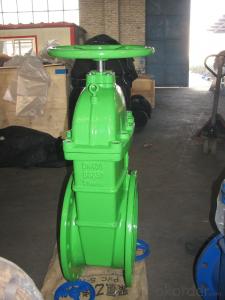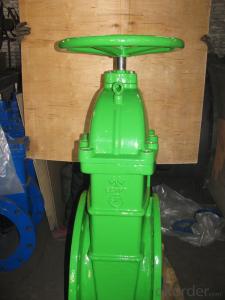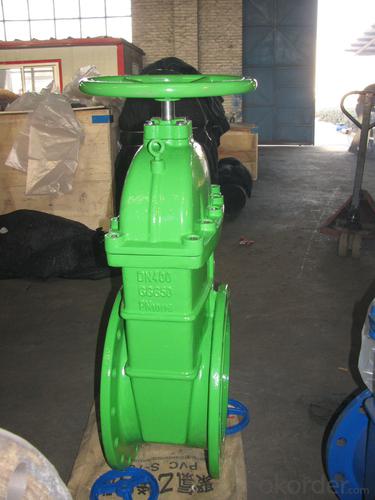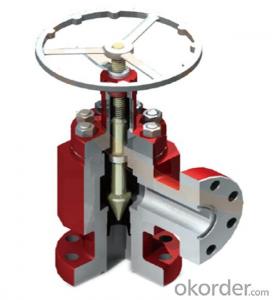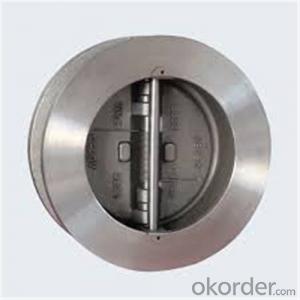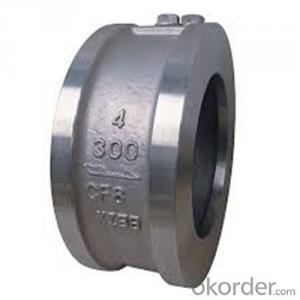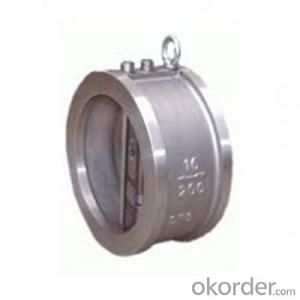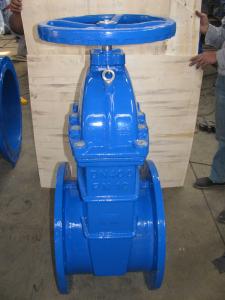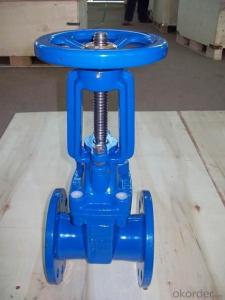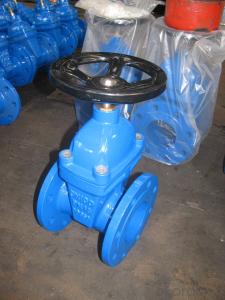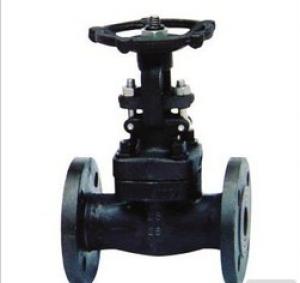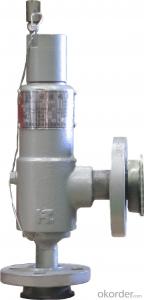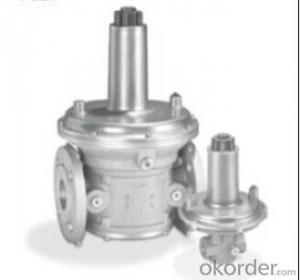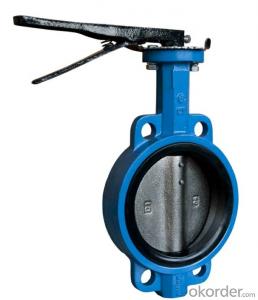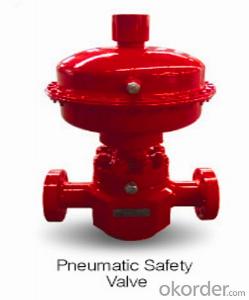Non-rising Stem Resilient Seated Gate Valve
- Loading Port:
- China Main Port
- Payment Terms:
- TT OR LC
- Min Order Qty:
- -
- Supply Capability:
- -
OKorder Service Pledge
OKorder Financial Service
You Might Also Like
Type: | Non-Rising Stem |
Material: | Body: Cast Iron / Ductile Iron Wedge: Cast Iron / Ductile Iron Encapsulated with EPDM Seat: EPDM / NBR Shaft: SS410 Stem Nut: Brass O-ring: EPDM, NBR Wedge Nut: Brass / Bronze Hand Wheel: Ductile Iron
|
Operator: | Hand Wheel / Bevel Gearing / Square head / Electric actuator |
Face to Face: |
BS5163: 1986, DIN 3202 F4-F5, JIS B2002, ANSI B16.10
|
Flange: | BS4504, DIN 2532, JIS B2212, ANSI B16.10/ANSI B16.50
|
Working Pressure: | 16 Bar(200 PSI) |
Design and Manufacturer Standard : | BS5163, DIN 3352, JIS B2043 |
Test Standard: | API 598 BS6755 DIN 3230 JIS B2003 |
Application: | Water works, Sewage, Public facilties, Building industry, Petroleum, Chemical, Steel, Metallurgy, Paper Making Industry, Foods, Beverage, HVAC |
| | | | ||||||||
| | | | ||||||||
| | | | ||||||||
| | | | ||||||||
| | | | ||||||||
| | | | ||||||||
| | | | ||||||||
| | | | ||||||||
- Q: please i want theory of MOTORIZED VALVE ? COURSE TITLE : MEASUREMENT AND CONTROL EXP. TITLE : CALIBRATION AND CHARACTERISTICS OF MOTORIZED VALVE
- Valves Either control valve or shut off vales operated by electric motor is called Motorized valve. Close the vale see it is closed Open the vale at different positions say 5% 10% 15% etc and see the control signal and the actual opening.
- Q: Situation: The males in my family have mitral valve prolapse, while I do not.If anyone could answer some of the following questions, it would be amazing! Thank you so much!1. Is this an X or Y chromosome disease? (I thought since it was just guys, it'd b Y)2. If so (or not), is there any reason why I don't have it?Thanks again! (:
- Dear Madam, I am a cardiologist sending this article for you. Hope it helps you. Mitral valve prolapse, sometimes called MVP, is a common heart valve disorder. The mitral valve is between the left atrium and the left ventricle of the heart. It has two leaflets (flaps) that control the blood flow. MVP occurs when one or both of the leaflets are enlarged or have extra tissue. MVP is usually harmless. However, major complications can occur, including a blood clot in the brain and an infection called infective endocarditis involving the mitral valve as well as other valves. MVP appears twice as often in women as in men. It is most commonly a hereditary disorder. Some people with MVP have no symptoms. However, most patients experience a rapid or irregular heartbeat, shortness of breath, light-headedness, and chronic fatigue. Many patients also suffer from migraines, eating and sleeping disorders, an overactive or inflamed thyroid gland, diarrhea, and cold hands and feet. Emotional stress often magnifies the symptoms. Doctors generally prescribe regular exams and aerobic exercise for people who have MVP. Patients also are advised to restrict their intake or use of high-carbohydrate foods, caffeine, and decongestants. Some patients may need beta-blockers and specific antiarrhythmic medication. More severe cases may require surgery to repair or replace the valve or to insert an electronic regulator, such as a pacemaker or defibrillator.
- Q: 1999 Mercury Cougar in awesome shape no engine problems, and has just under 86000 miles. I bought it recently and the check engine light came on out of nowhere and I realized It was an EGR issue the code was p0401 insufficient flow. I had a mechanic replace the solenoid valve as well as clean all of the carbon gunk off the valve and the light was off, then suddenly POPPED back on, making me really nervous and kind of upset. So today I had a few errands to run and I said I wasn't going to go get it read again until tomorrow, and it just Went off. So Is the car just very sensitive to things and is that why it goes on and off? Or is something wrong? I'm a student who really wants to keep this car nice like I bought it.
- The EGR= exhaust gas recirculation valve is a controlling device to allow inert gas into the engine at cruise. The tube below it supplies the gases and the valve directs it into the engine. Any where within this assembly carbon can build up and get lodged in the pintle of the EGR valve. Some times it is the valve and a vacuum test of the diaphragm will detect failure. Keep in mind that there are two versions of the EGR valve Positive and negative pack pressure and the test is different for a positive back pressure style valve. A flexible spring rod with a scraping device at the end wil really help in the cleaning of the tube and passages. Don't give up , your on the right road.
- Q: Hi. I am planning to install new kitchen faucet and noticed that there are two shut off valves under the sink. One of them is badly rusted and needs to be replaced. I noticed that it is connected to three pipes (one of which is kitchen faucet). The other is clearly water coming in. What is the third one connected to wall? Also how should I go about replacing this? Anything that I should be careful of? Thank you.Here's picture of shutoff valve.
- Ditto on the picture. It sounds like a valve that supplies water to both the faucet and another appliance. If the line not going to the faucet is copper and measures 3/8 across (OD or outside diameter), likely a dishwasher. If it's 1/4 OD, likely a refrigerator ice maker. More important is what kind of pipe you have coming into the cabinet to the valve. An older house may have galvanized steel, typically nominal 1/2, which measures about 3/4 OD. Newer homes are more likely to have copper, typically nominal 1/2, which measures 5/8 OD. Hopefully, either will come into the cabinet for several inches before meeting the valve. Shut off the water downstairs, then disconnect the two smaller supply lines at the valve. For steel pipe, the valve is threaded onto it. Use two wrenches, one pipe wrench on the pipe itself, tensioned clockwise, then another to unthread the valve counterclockwise. For copper pipe, the valve is typically soldered on or has a compression connector with a fairly wide nut holding onto the pipe. Cleanest removal, with enough copper in the cabinet, is to use a mini tubing cutter and cut the copper right under/behind the valve, freeing the valve. Take the valve to the store and buy a match, preferably a quarter-turn ball valve. One glitch is the possibility that it's an old flare valve - meaning that the two lines you unhooked have flare nuts. If they're copper, I'd plan to slide the flare nuts back a little, cut off the flares at the end of the tubes, and get a new valve with all compression fittings. If the old lines are then too short to make it to the new valve, they can be cut back further, then extended with new copper, or short flexible water supply lines with compression fittings on each end. I'm still leaving out more stuff, but that's enough.
- Q: When my son was three I switched Dr's for him. The new doctor said has he always had a heart murmur I said no that's the first I've heard of it so we went for test. Anyway heart specialist did all tests said my son had Bav a valve disorder in the heart. He said it is very common. However everyone I've ever talked to has never heard of it. My question is does anyone have this what is your story and have you had to have your valve replaced. My son is very healthy active I'm just worried. Any help would be greatly appreciated....thank you!!
- As long as the action of the valve is normal and child is otherwise active and healthy with normal cardiac functions, mile stones, and growth, you can almost forget about the anomaly.
- Q: Ok so i am 16 years old, and i have Aortic stenosis, bicuspid aortic valve, aortic regurgitation and an Enlarged aorta. I am soon going to be getting an aortic valve replacement. I am just wondering what happens before and after the surgery and how long i will be in the hospital, how long in the ICU, what kind of tubes/machines will i need? any information will help. thanks :)
- They will probably do a tissue valve replacement so there would be no need for life long therapy of blood thinners. As for the post op. Our hospital recovers heart surgeries right in our cardiovascular intensive care unit. We do not reverse anesthesia, we let our patients wake up on their own. Because of this, we have them on a ventilator until they wake up and are functional enough to breath on their own. We also monitor things very invasively, so there are a lot of lines. We have a Swan Gantz catheter which measures the pressures in the heart, an ART line, which measures your blood pressure internally, and an I.V. that goes directly into your heart called a central venous line. Usually after you wake up from surgery, if all your pressures look good, we start to take out those invasive lines and we get you out of bed. Most of our patients are in our unit for 1-2 days if all goes well. Then we transfer them up to the telemetry floor for a couple of days and then we send them home. Valve replacement surgery is still a major surgery but we do them every day and the majority of our patients come out of surgery just fine and are home in a week.
- Q: Hey guys Itook my car to mechanic because my engine light was on and the code showd that it was unsufficient egr lift or something like that....they had changed the egr valve before so this time they said there was carbon build up and they cleaned it and my car runs great now. i don't have problem with accelaration and the engine doesn't stall when i stop, BUT the light came on again and still shows the same code. I am sick of it!!! anybody knows what else could it be? It's 94 honda accord with 140 000 miles on it.
- Hi Val, It sounds to me like the repair shop made a mistake here, they replaced a part without addressing the condition. If you had a fault for ERG insufficient flow , it would be caused by excessive carbon build-up in the intake manifold or the upper intake plenum, depending on engine. If you had a problem with stall at idle and a fault for excessive EGR flow the culprit would be loose carbon particles lodging in the EGR valve pintle and keeping it open. In either case the carbon needs to be physically removed, this would involve removing the intake manofold and or upper plenum Good Luck!
- Q: have a 86 flhtc had new cylinders 10-1 pistons supposed to be 86 cubic inches when i run it up to 90-95 bending valves what can i do to stop bending valves-------HARLEY DAVIDSON
- sounds like the high compression pistons dont have enuf valve relief( 2 little depressions on the top of the piston to keep the piston from smacking the valve). youll have to change brand of pistons, with more valve relief, or lower the compression ratio. next time before you completely put the heads back on, do so with out the head gasket and turn engine over by hand to see if the valves and pistons collide. (no head nuts either) if they collide, you will see the head rise up on contact. this could also be the lift and duration of the cam you are using. specifically the duration. if the valve stays open too long the piston will smack the valve that way too also at high revs, if the valve springs are weak, will cause the valve to float causing the piston to smack the valve
- Q: I want to put a blow off valve in my car to make it sound cool lol but i dont have a turbo yet ... do i even need one?
- look on youtube theres a way but its a very getto way lol. there youtube user name is mightycarmods
- Q: i heard i should get one rather than a Dump valve, well?, should i?
- If you are referring to a big truck or a dump truck, A pressure release valve or pop-off valve let's air release out of the air system to keep the system from building up too much air pressure. A dump valve releases all of the air from the air ride suspension or pony axle.
Send your message to us
Non-rising Stem Resilient Seated Gate Valve
- Loading Port:
- China Main Port
- Payment Terms:
- TT OR LC
- Min Order Qty:
- -
- Supply Capability:
- -
OKorder Service Pledge
OKorder Financial Service
Similar products
Hot products
Hot Searches
Related keywords
